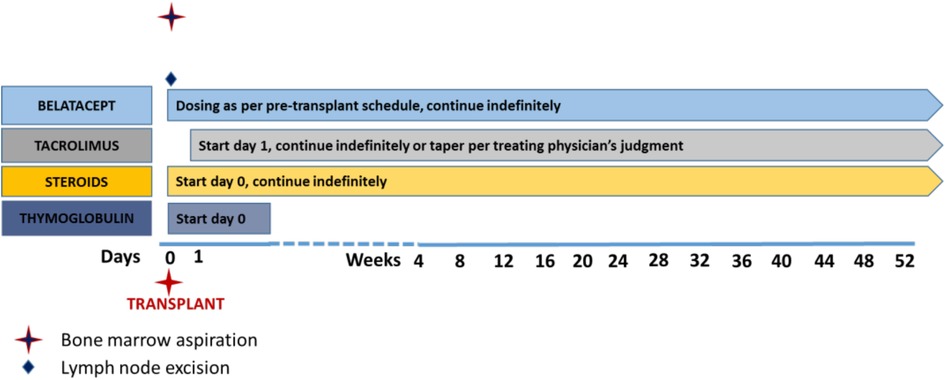Crafting a compelling speech requires more than just eloquent words; it demands a deep understanding of your audience. This guide delves into the intricacies of adapting your speech to resonate with various listener types, from experts to beginners, colleagues to clients, and the general public. By tailoring your language, tone, and delivery, you can ensure maximum impact and achieve your communication goals.
This comprehensive approach will equip you with the tools and techniques to effectively connect with any audience. We’ll explore how to adjust your vocabulary, sentence structure, and overall style to create a speech that is both informative and engaging for everyone present. From identifying audience characteristics to handling questions and feedback, this guide will provide a practical framework for crafting impactful presentations.
Identifying Audience Types
Understanding your audience is crucial for effective communication. Tailoring your speech to the specific knowledge, experience, and goals of your listeners ensures your message resonates and achieves its intended impact. This section details various audience types and their characteristics to aid in adapting your communication style accordingly.
Classifying Audience Types
Different audiences bring unique perspectives and expectations to a presentation. Categorizing them helps you adapt your message effectively. This section Artikels common audience types and their defining characteristics.
- Experts: These individuals possess a high level of knowledge and experience in the subject matter. They are familiar with complex terminology and concepts, and often have a critical eye for detail. They appreciate in-depth explanations and nuanced perspectives, seeking insights beyond the surface level. Their primary goal is often to gain new knowledge or perspectives, or to understand the implications of the topic in their specific field.
They value accuracy and rigorous reasoning, often expecting supporting data and evidence to back claims. Their communication style often involves challenging assumptions, probing questions, and seeking clarity on complex points.
- Beginners: These individuals have little to no prior knowledge of the subject. Their understanding is limited to fundamental concepts, and they may require simpler explanations and concrete examples. Their primary goal is often to acquire a basic understanding of the topic and build a foundation for further exploration. They value clarity and simplicity, preferring clear and concise language.
Their communication style often involves seeking clarification, posing basic questions, and requesting further elaboration.
- Colleagues: These individuals share a similar level of expertise and understanding of the subject matter. They are familiar with industry jargon and norms, and are interested in practical applications and implications. Their primary goal is often to exchange information, collaborate, or make informed decisions together. They value efficiency and shared understanding, preferring a conversational and collaborative communication style.
Their communication style often involves direct and concise communication, emphasizing shared experiences and mutual goals.
- Clients: Clients are interested in the practical benefits and outcomes of the subject matter. Their primary goal is often to understand how the topic can address their needs or solve their problems. They value solutions and tangible results, and may be more interested in the “what” and “how” than the “why”. Their communication style often involves direct and solution-oriented language, highlighting the advantages and potential return on investment.
- General Public: This audience encompasses a broad range of individuals with varying levels of knowledge and interests. Their primary goal is often to gain a general understanding of the topic and its relevance to their lives. They value clear and engaging communication, avoiding complex jargon. Their communication style is typically approachable and relatable, using familiar examples and avoiding overly technical language.
Comparing Audience Types
This table summarizes the key differences between the audience types across various dimensions.
| Audience Type | Knowledge Level | Experience | Goals | Values | Communication Style | Technical Vocabulary | Formality | Tone |
|---|---|---|---|---|---|---|---|---|
| Experts | High | Extensive | Gain new insights, understand implications | Accuracy, rigor, in-depth understanding | Challenging, probing, seeking clarity | High | Formal | Analytical, critical |
| Beginners | Low | Limited | Acquire basic understanding | Clarity, simplicity, concrete examples | Seeking clarification, posing basic questions | Low | Formal or Informal | Patient, |
| Colleagues | Medium | Similar | Exchange information, collaborate | Efficiency, shared understanding | Direct, concise, conversational | Medium | Formal or Informal | Collaborative, supportive |
| Clients | Variable | Various | Understand benefits, solve problems | Solutions, tangible results | Direct, solution-oriented | Low to Medium | Formal or Informal | Benefit-driven, practical |
| General Public | Variable | Various | Gain general understanding | Clarity, engagement, relevance | Approachable, relatable | Low | Informal | Engaging, accessible |
Adapting Language for Different Audiences

Effective communication hinges on understanding and tailoring your message to the specific knowledge and background of your audience. This requires adjusting not only the content but also the language used, ensuring clarity and maximizing engagement. Different audiences will respond differently to various linguistic choices. Therefore, adapting your language is crucial for successful communication.Understanding the audience’s knowledge level and background allows you to adjust the vocabulary, sentence structure, and overall tone of your speech.
By doing so, you enhance comprehension, engagement, and overall impact. This adaptability fosters a more receptive and productive communication experience for all involved.
Adjusting Vocabulary and Sentence Structure
To effectively communicate with diverse audiences, it’s essential to tailor your vocabulary and sentence structure. A beginner audience, for instance, requires simpler language and shorter sentences to ensure comprehension. In contrast, an expert audience can grasp more complex terminology and intricate sentence structures.
- For a beginner audience, avoid jargon and technical terms. Use everyday language and define any unfamiliar terms. Example: Instead of “synergistic outcomes,” use “combined results.” Shorter, simpler sentences improve clarity. Example: “The project aims to improve efficiency.” rather than “The project is designed to optimize operational efficiency by enhancing resource allocation and reducing operational costs.”
- For an expert audience, you can utilize specialized vocabulary and complex sentence structures. Example: Instead of “combined results,” use “synergistic outcomes.” More complex sentences can be used, such as “The project’s success hinges on optimizing resource allocation and reducing operational costs to achieve synergistic outcomes.”
Adjusting Sentence Length and Complexity
The length and complexity of sentences significantly affect audience comprehension. Shorter, simpler sentences are generally better for audiences with limited prior knowledge or a shorter attention span. Longer, more complex sentences can be used with audiences possessing a deeper understanding of the subject matter.
- For a novice audience, shorter sentences are preferable. Example: “The process is straightforward.” This allows for easier comprehension. While more complex sentences might be possible, they could be harder for a novice audience to follow.
- For an expert audience, longer and more complex sentences are often appropriate. Example: “The process, while seemingly straightforward, incorporates several nuanced factors that impact the outcome.” This allows for a more in-depth exploration of the topic.
Formality Levels and Language Choices
The level of formality in your language directly impacts how your audience perceives you and your message. A formal tone is suitable for professional settings, while a more casual tone works well for informal gatherings.
| Formality Level | Language Choices |
|---|---|
| Formal | Precise vocabulary, standard grammar, avoidance of slang or colloquialisms. Examples include: “The presentation will commence shortly.” or “We must adhere to the prescribed procedures.” |
| Semi-Formal | Clear and concise language, avoidance of overly technical terms, appropriate for most business settings. Examples include: “The presentation will start soon.” or “We need to follow the guidelines.” |
| Informal | Relaxed and conversational language, use of slang or colloquialisms appropriate for social settings. Examples include: “Let’s get this presentation going.” or “We need to stick to the plan.” |
Considering Audience Needs and Expectations
Understanding your audience’s needs and expectations is paramount to crafting a compelling and effective speech. Ignoring these crucial elements can result in a disconnect between the speaker and the listeners, leading to a lack of engagement and potentially diminishing the speech’s impact. A tailored approach, recognizing audience motivations and objectives, will ultimately enhance the overall experience for everyone involved.A successful speech hinges on more than just delivering information.
It involves understanding the context within which the message is being received. This necessitates an insightful examination of the audience’s potential goals and motivations. Anticipating their questions and concerns allows for proactive addressal, further strengthening the speaker’s credibility and building trust. Therefore, a deep understanding of audience needs is an essential prerequisite for effective communication.
Importance of Understanding Audience Needs
Understanding audience needs is crucial for a successful speech. It’s not simply about the content but about how the content resonates with the listeners’ specific interests and concerns. By anticipating their needs, speakers can tailor their message to be more relevant and engaging, fostering a stronger connection and maximizing the speech’s impact. Speakers who disregard audience needs risk losing their audience’s attention and failing to achieve their communication objectives.
Tailoring the Message to Specific Audience Goals
Tailoring the message to meet specific audience goals involves a deep understanding of what the audience hopes to gain from the speech. This may involve presenting information in a format that best suits their learning styles or providing insights that directly address their current challenges. For example, a speech designed for investors will differ significantly from one intended for employees.
The content, structure, and tone must align with the specific objectives of the targeted audience. This adaptability is key to maximizing the speech’s impact.
Anticipating Potential Questions and Concerns
Anticipating potential questions and concerns is essential for a successful speech. Understanding the audience’s background, interests, and potential biases will allow for proactive addressing of possible concerns. This demonstrates a thorough understanding of the audience and fosters trust and credibility. Addressing potential questions and concerns ahead of time often prevents them from arising during the speech, maintaining a positive flow and engagement.
Questions to Understand Audience Needs
A thoughtful approach to understanding audience needs begins with self-reflection. Asking these questions can significantly improve the likelihood of a successful speech.
- What are the audience’s primary goals and objectives for attending this speech?
- What are the audience’s current challenges or concerns related to the topic?
- What are the audience’s potential expectations of the speaker and the speech itself?
- What knowledge and experiences does the audience already possess regarding the topic?
- What is the audience’s preferred learning style (e.g., visual, auditory, kinesthetic)?
- What is the overall atmosphere or tone that would resonate best with the audience?
- What are the potential questions or concerns that the audience might have, and how can these be addressed?
By thoughtfully considering these factors, speakers can craft a more impactful and engaging presentation that effectively addresses the audience’s needs and expectations.
Adjusting Tone and Style for Different Audiences

Crafting a compelling speech involves more than just the content; it necessitates tailoring the tone and style to resonate with the specific audience. Understanding the audience’s expectations and adjusting your delivery accordingly is crucial for maximizing impact and fostering a positive connection. A well-suited tone and style can significantly enhance the reception and retention of your message.Effective communication hinges on recognizing the diverse needs and expectations of different audiences.
Choosing the right tone, whether formal or informal, humorous or serious, significantly impacts the audience’s interpretation and engagement. The speaker’s style should complement the subject matter and the environment, creating a unified and impactful presentation.
Formal Tone
A formal tone is characterized by precision, objectivity, and respect. It prioritizes clarity and avoids colloquialisms, slang, or overly casual language. This approach is suitable for academic settings, professional presentations, or occasions demanding a respectful and serious demeanor. Formal presentations often employ a structured approach, with clear transitions between points, and a focus on facts and figures.
Informal Tone
Conversely, an informal tone is more conversational and approachable. It employs a relaxed, friendly style, and incorporates humor and personal anecdotes where appropriate. This approach works well for gatherings where the audience feels more at ease and a less rigid structure is desired. This can be particularly effective in motivating and engaging a group.
Humor and Engaging Elements
Integrating humor and other engaging elements, such as stories and examples, can significantly enhance audience engagement. However, the appropriateness of these elements depends heavily on the audience and the context of the speech. Humor should be used judiciously, ensuring it aligns with the audience’s sensibilities and doesn’t detract from the core message. Humor that is too personal or insensitive can quickly alienate the audience.
Adapting Tone and Style
| Tone | Appropriate Scenarios | Example Language |
|---|---|---|
| Formal | Academic conferences, professional presentations, board meetings | “In this study, we observed a significant correlation between…” |
| Informal | Motivational speeches, team-building sessions, casual gatherings | “Let’s face it, we all have challenges, but together, we can overcome them.” |
| Enthusiastic | Product launches, celebratory events, motivational speeches | “This is an incredible opportunity for all of us!” |
| Empathetic | Fundraising events, speeches at memorials, addressing sensitive issues | “I understand that this is a difficult time for many of you.” |
Using Visual Aids Effectively
Visual aids are crucial for enhancing audience engagement and comprehension. They provide a supplementary layer of information that can help clarify complex concepts, reinforce key messages, and maintain audience interest. Effective use of visual aids is not just about adding pretty pictures; it’s about strategically selecting and presenting information that resonates with the specific audience.Careful consideration must be given to the design and content of visual aids to ensure they serve the intended purpose, and are not distracting or confusing.
Adapting these tools to various audience types is paramount to maximize their effectiveness. A visual aid that works well for a technical audience might be confusing or irrelevant to a less technical audience.
Adapting Visual Aids to Audience Types
Visual aids should be tailored to match the audience’s background, knowledge level, and interests. A technical audience, for instance, may appreciate complex charts and graphs, while a less technical audience may benefit from simpler, more illustrative representations. The key is to ensure the visual aids are not only informative but also accessible and engaging for all.
Visual Aids for Different Audiences
The choice of visual aid depends greatly on the audience’s needs and the subject matter. For a general audience, simple diagrams, flowcharts, and images that illustrate key concepts can be highly effective. When addressing a technical audience, complex charts, graphs, and statistical data might be necessary to provide a comprehensive overview of the subject.
Creating Clear and Concise Visual Aids
Visual aids should be designed with clarity and conciseness in mind. Avoid clutter and excessive detail, as this can overwhelm the audience and reduce comprehension. Use clear, legible fonts and appropriate colors. Keep the message focused and easy to understand. For a less technical audience, this involves using simplified language and avoiding jargon or technical terms.
Using clear and concise language, along with impactful visuals, can significantly improve audience engagement.
Examples of Visual Aids for Different Audiences
- General Audience: A simple flowchart illustrating the steps in a process, accompanied by a few illustrative images, would be more engaging than a complex data chart.
- Technical Audience: A complex graph showing the relationship between multiple variables, accompanied by a detailed legend, would be appropriate. This will provide the context and necessary detail for the audience.
- Children’s Audience: Cartoon illustrations and animated sequences, accompanied by concise text, can maintain interest and convey information in a fun and easy-to-understand manner. For instance, a diagram illustrating a scientific process with colorful drawings of the components would be suitable.
Visual Aids for a Less Technical Audience
When designing visual aids for a less technical audience, it’s crucial to prioritize simplicity and clarity. Avoid complex charts or graphs that might be difficult to interpret. Focus on using clear and concise language, and use images and diagrams to illustrate key concepts. The goal is to ensure the information is easily digestible and memorable. For example, use simple bar graphs instead of complex scatter plots to present data, and replace technical terminology with everyday language.
Illustrative images and examples will further enhance comprehension.
Importance of Visual Simplicity
Visual aids for less technical audiences should be straightforward and easy to grasp. Overly complex visuals can overwhelm and confuse them, leading to reduced understanding. The design should be uncluttered and the message should be clear. Use plain language and avoid jargon. Images, icons, and simple diagrams are more effective than elaborate charts or graphs.
Practicing and Refining Your Delivery

Effective communication hinges not just on the content of your speech, but also on how you deliver it. Practicing and refining your delivery style allows you to connect with your audience on a deeper level, making your message more impactful and memorable. This involves adapting your pacing, tone, and body language to suit the specific audience, and engaging them effectively to maintain interest.
Adapting Delivery Style to Suit the Audience
Successful delivery involves tailoring your approach to the specific characteristics of your audience. A speech aimed at a group of highly technical experts will require a different delivery style than one aimed at a general audience. Consider the audience’s background knowledge, their expectations, and their likely emotional responses. This careful consideration allows you to adjust your delivery to best convey your message.
Adjusting Pacing, Tone, and Body Language
Varying your pacing, tone, and body language can significantly impact how your audience receives your message. A rapid pace can convey energy and enthusiasm, while a slower pace can emphasize important points or create a sense of solemnity. The tone you adopt should align with the subject matter and the desired emotional response. A conversational tone can foster a sense of connection, while a more formal tone may be appropriate for a more academic or professional setting.
Body language, including posture, gestures, and eye contact, plays a crucial role in conveying confidence and engagement. Open posture and appropriate eye contact can create a connection with the audience, while fidgeting or avoiding eye contact can signal nervousness or a lack of confidence.
Engaging the Audience Effectively
Engaging the audience involves more than just delivering information; it’s about creating a dynamic interaction. Use techniques such as asking rhetorical questions, incorporating anecdotes, or telling stories to capture and maintain attention. Adjust your delivery to the audience’s energy level. If the audience is initially quiet or reserved, you may need to use more interactive techniques to draw them in.
If they are already engaged and enthusiastic, you can use a more relaxed and conversational style to maintain the momentum. Use pauses strategically to allow the audience to absorb information and to build anticipation for what’s to come.
Table Summarizing Adjustments to Speech Delivery
| Audience Type | Pacing | Tone | Body Language | Engagement Techniques |
|---|---|---|---|---|
| Highly Technical Experts | Moderate, allowing time for complex ideas | Formal, precise | Confident, direct eye contact | Use of technical terms, visual aids, and clear explanations |
| General Audience | Balanced, engaging | Conversational, enthusiastic | Open, engaging, use of gestures | Stories, analogies, humor, and interactive elements |
| Students | Moderate, with clear explanations | Enthusiastic, approachable | Energetic, approachable, and open | Relatable examples, interactive questions, and demonstrations |
| Business Professionals | Direct, concise | Formal, confident | Poised, professional | Focus on solutions, clear data, and practical applications |
Handling Questions and Feedback

Effective communication hinges on a speaker’s ability to not only present information but also engage with the audience’s responses. This section explores strategies for managing questions and feedback, ensuring a positive and productive interaction. A thoughtful approach to handling these elements demonstrates respect for the audience and fosters a deeper understanding of the material.Successfully navigating questions and feedback requires a proactive approach.
This involves anticipating potential concerns, preparing concise and clear responses, and creating an environment where audience members feel comfortable sharing their thoughts. By actively listening and addressing concerns thoughtfully, speakers can strengthen their message and cultivate a more meaningful connection with the audience.
Strategies for Managing Questions
Understanding the audience’s perspective is paramount. Different types of audiences will have varying levels of prior knowledge and expectations regarding the presentation. A speaker should tailor their responses accordingly. This necessitates anticipating possible questions and preparing potential answers, ensuring they are clear, concise, and respectful.
- For a highly knowledgeable audience, delve into nuanced details and address complex queries with precision and technical accuracy. For instance, if the audience is composed of experts in the field, a response that goes beyond a superficial explanation will demonstrate a deeper understanding of the subject.
- When interacting with a less knowledgeable audience, prioritize clarity and simplicity. Using analogies, real-world examples, and visual aids can greatly enhance understanding. This ensures that the message is accessible to all members of the audience, regardless of their existing knowledge.
- Regardless of the audience’s background, a respectful and empathetic tone is essential. Acknowledging the questioner and their perspective shows consideration and promotes a more collaborative dialogue. A simple “Thank you for that insightful question” or “I appreciate you bringing that up” can significantly enhance the interaction.
Addressing Concerns and Criticisms
Constructive criticism, when handled appropriately, can be invaluable for refining a presentation and ensuring it meets the needs of the audience. Addressing concerns directly and thoughtfully is crucial for maintaining a positive atmosphere.
- Acknowledge the concern. Start by validating the sentiment expressed by the audience member, even if you don’t fully agree with their perspective. A statement like “I understand your concern about…” demonstrates active listening and a willingness to engage with the feedback.
- Provide a clear and concise explanation. Offer a reasoned response to the concern, explaining the rationale behind the presentation’s points or the decisions made. Use clear and concise language, avoiding jargon or technical terms that the audience might not understand.
- Offer solutions or alternative perspectives, where appropriate. If possible, propose alternative solutions or perspectives to address the concern. This demonstrates a proactive approach to problem-solving and shows a commitment to improvement.
Example Responses to Common Questions and Concerns
| Question/Concern | Possible Response (Audience Type: General) |
|---|---|
| “This topic is too broad.” | “I appreciate your feedback. To make this more focused, let’s concentrate on the recent developments in [specific area].” |
| “The information presented is outdated.” | “Thank you for pointing that out. I’ve updated my research to reflect the most recent findings on [specific topic] and will include these updates in future presentations.” |
| “The visuals are unclear.” | “I understand your feedback. I’ll ensure the visuals are clearer and more impactful in future presentations.” |
Last Point
In conclusion, adapting your speech for diverse audiences is crucial for effective communication. By understanding audience types, adjusting language and tone, and considering their needs, you can tailor your presentation to maximize engagement and achieve your desired outcomes. Remember to practice your delivery, anticipate questions, and use visual aids strategically. This comprehensive guide has provided the necessary framework to help you connect with any audience.